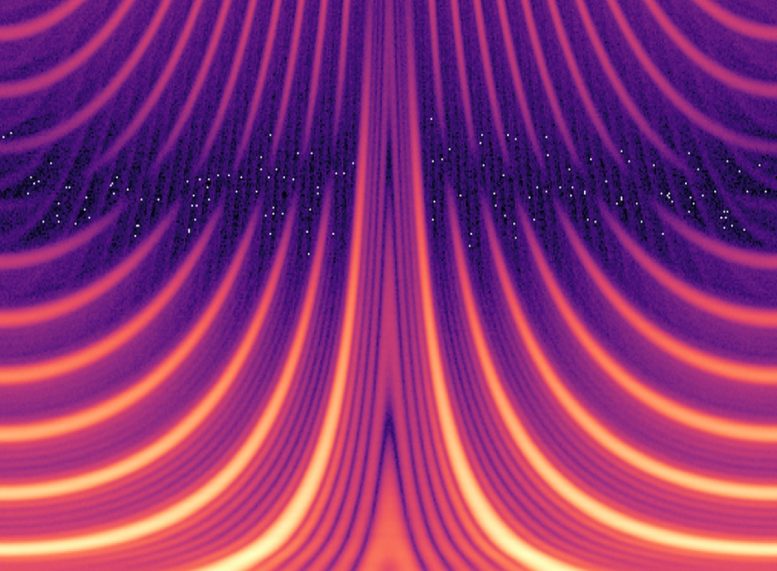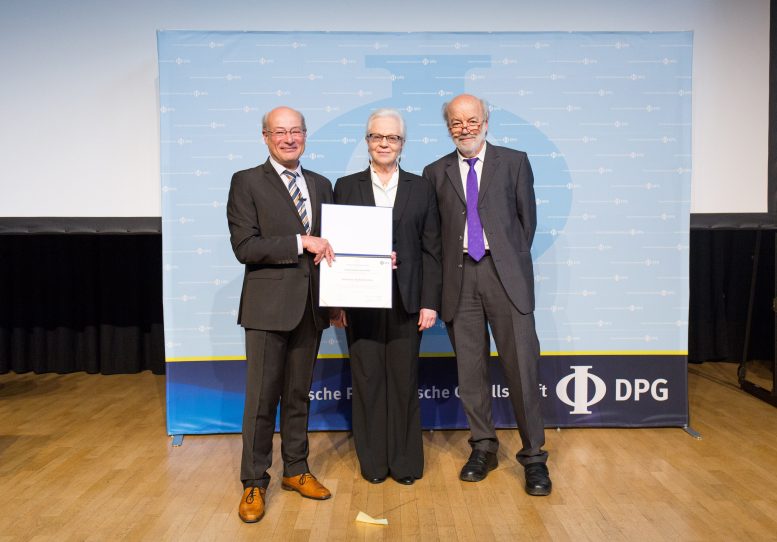
Researchers have developed a groundbreaking quantum memory for X-rays, allowing extended memory times and paving the way for advanced quantum optics applications, including photon entanglement at X-ray energies.
Light serves as an exceptional carrier of information, playing a crucial role not only in traditional communication technologies but also in emerging quantum applications like quantum networking and computing. However, processing light signals is significantly more complex than handling standard electronic signals.
An international team of researchers including Dr. Olga Kocharovskaya, a distinguished professor in the Department of Physics and Astronomy at Texas A&M University, has demonstrated a novel way of storing and releasing X-ray pulses at the single photon level — a concept first proposed in earlier theoretical work by Kocharovskaya’s group — that could apply to future X-ray quantum technologies.
The team’s work, led by Helmholtz Institute Jena Professor Dr. Ralf Röhlsberger and performed using the synchrotron sources PETRA III at the German Electron Synchroton (DESY) in Hamburg and the European Synchrotron Radiation Facility in France, resulted in the first realization of quantum memory in the hard X-ray range. Their findings are published in the journal Science Advances.
The Function and Challenges of Quantum Memory
“Quantum memory is an indispensable element of the quantum network, providing storage and retrieval of quantum information,” said Kocharovskaya, a member of the Texas A&M Institute for Quantum Science and Engineering. “Photons are fast and robust carriers of quantum information, but it is difficult to hold them stationary in case this information is needed at a later time. A convenient way of doing this is by imprinting this information into a quasi-stationary medium in the form of polarization or spin wave with a long coherence time and releasing it back via re-emission of the original photons.”
Kocharovskaya says several protocols for quantum memories have been established but are limited to optical photons and atomic ensembles. Using nuclear rather than atomic ensembles, she adds, delivers much longer memory times achievable even at high solid-state densities and room temperature. Those longer memory times are a direct result of the lower sensitivity of the nuclear transitions to perturbations by external fields, thanks to the small nuclei sizes. In combination with a tight focusing of the high-frequency photons, such approaches could lead to the development of long-lived broad-band compact solid-state quantum memories.

Development of a New X-ray/Nuclear Protocol
“The direct extension of the optical/atomic to X-ray/nuclear protocols proves to be challenging or impossible,” explains Dr. Xiwen Zhang, a postdoctoral researcher in Kocharovskaya’s group who participated in the experiment and co-authored the team’s paper. “Thus, a new protocol was suggested in our earlier work.”
According to Zhang, the idea behind the team’s new protocol is very simple, at least in terms of quantum fundamentals. Essentially, a set of moving nuclear absorbers forms a frequency comb in the absorption spectrum due to the Doppler frequency shift caused by the motion. A short pulse with the spectrum matching a comb absorbed by such a set of nuclear targets will be re-emitted with the delay determined by the inverse Doppler shift as a result of the constructive interference between different spectral components.
“This idea was successfully realized in our current experiment featuring one stationary and six synchronously moving absorbers that have formed a seven-teeth frequency comb,” Zhang added.
Zhang says nuclear coherence lifetime is the limiting factor that determines the maximum storage time for this type of quantum memory. For instance, using longer-lived isomers than the iron 57 isotope the team chose for their current study would result in a longer memory time.
Regardless, he notes that working at a single-photon level without losing information qualifies the nuclear frequency comb protocol as a quantum memory, which is a first for X-ray energies. The next steps planned by the team include on-demand release of the stored photon wave packets, which could lead to the realization of the entanglement between different hard X-ray photons — the main resource for quantum information processing. The team’s research also highlights the potential for extending optical quantum technologies to the short wavelength range, which is intrinsically less “noisy” due to averaging of fluctuations over a large number of high-frequency oscillations.
Kocharovskaya says the challenging possibilities are intriguing and that she and her collaborators look forward to continuing to explore the potential of their tunable, robust, and highly versatile platform to advance the field of quantum optics at X-ray energies in the near future.
Reference: “Nuclear quantum memory for hard x-ray photon wave packets” by Sven Velten, Lars Bocklage, Xiwen Zhang, Kai Schlage, Anjali Panchwanee, Sakshath Sadashivaiah, Ilya Sergeev, Olaf Leupold, Aleksandr I. Chumakov, Olga Kocharovskaya and Ralf Röhlsberger, 26 June 2024, Science Advances.
DOI: 10.1126/sciadv.adn9825
The study was funded by the Deutsche Forschungsgemeinschaft, DESY, and the U.S. National Science Foundation.
5 Comments
The direct extension of the optical/atomic to X-ray/nuclear protocols proves to be challenging or impossible. Why?
Scientific research guided by correct theories can help humanity avoid detours, failures, and pomposity. Please witness the exemplary collaboration between theoretical physicists and experimentalists (https://scitechdaily.com/microscope-spacecrafts-most-precise-test-of-key-component-of-the-theory-of-general-relativity/#comment-854286). Some people in contemporary physics has always lived in a self righteous children’s story world. Whose values have been overturned by such a comical and ridiculous reality?
The branch of mathematics known as topology has become a cornerstone of modern physics. The perpetually swirling topological vortices defy traditional physics’ expectations, potentially breaking through the bottleneck of physical theory and unveiling new particles and forces.
The universe does not algebra, formulas, or fractions. The universe is a superposition, deflection, and entanglement of geometric shapes, is the interaction and balance of countless topological vortex fractal structures. In their interaction and balance, the past is difficult to change. For the future, some predictable, some unpredictable. But, the present moment is real, certain, and actionable. Physics should not ignore that low dimensional topological fractal structures are the material basis of high-dimensional spacetime.
When physics no longer believes in geometric shapes, it can only believe in God, angels, and even a strange cat (quantum mechanics). Contemporary physics should not always live in a world of fairy tales.
Space has physical properties of zero viscosity and absolute incompressibility. Zero viscosity and absolute incompressibility are physical characteristics of ideal fluids. The space with ideal fluid physical characteristics forms vortices via topological phase transitions, which is not difficult to understand mathematically. Once the topological vortex is formed, it occupies space and maintains its presence in time. This is the transition from chaos to order via two bidirectional coupled continuous chaotic systems.
Symmetry of topological vortex can be used to explore particle behavior under spatial, temporal, and quantum number reversals, involving quantum gravity, discrete and continuous changes. It underpins the consistency of natural laws and experiment reproducibility. The perpetually swirling topological vortices defy traditional physics’ expectations, heavily influencing traditional physics theories and potentially unveiling new particles and forces.